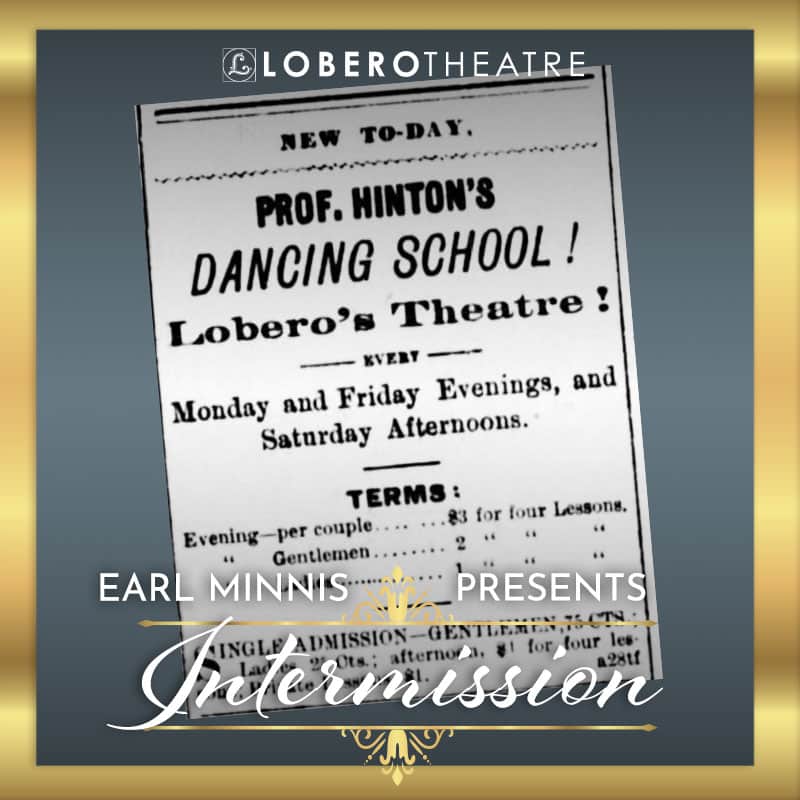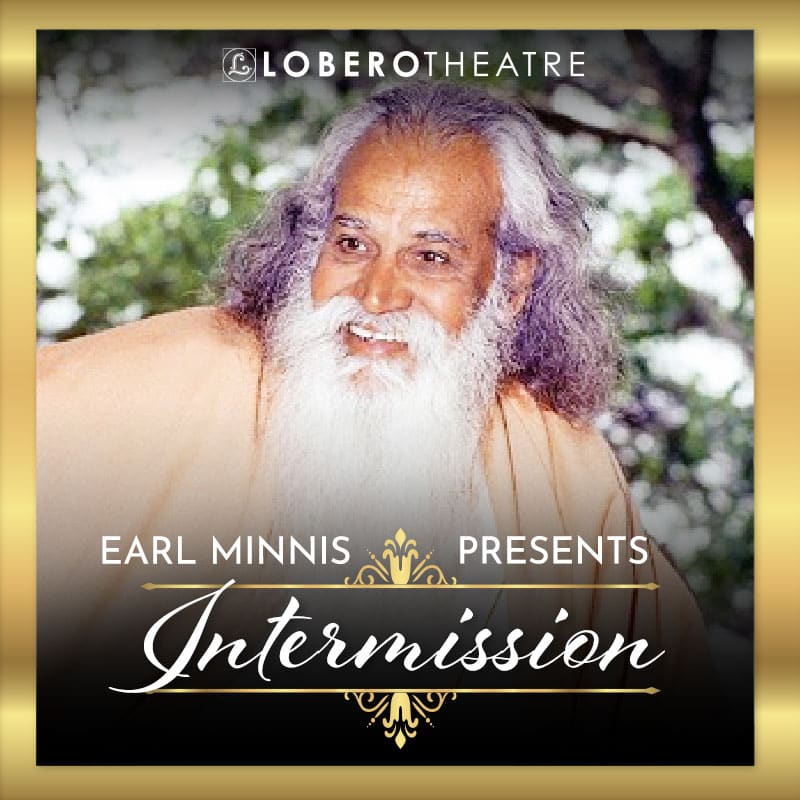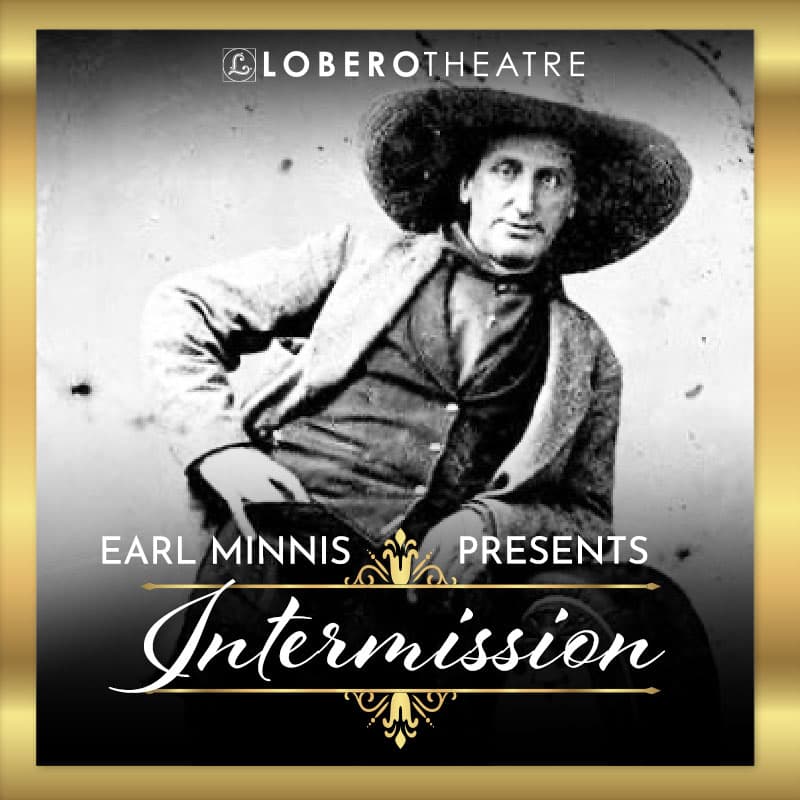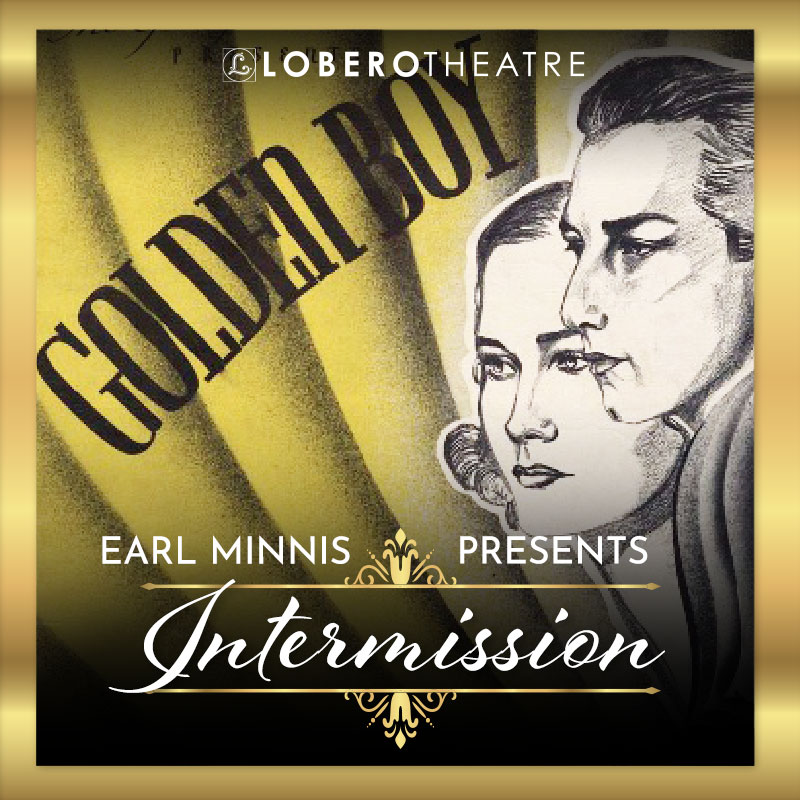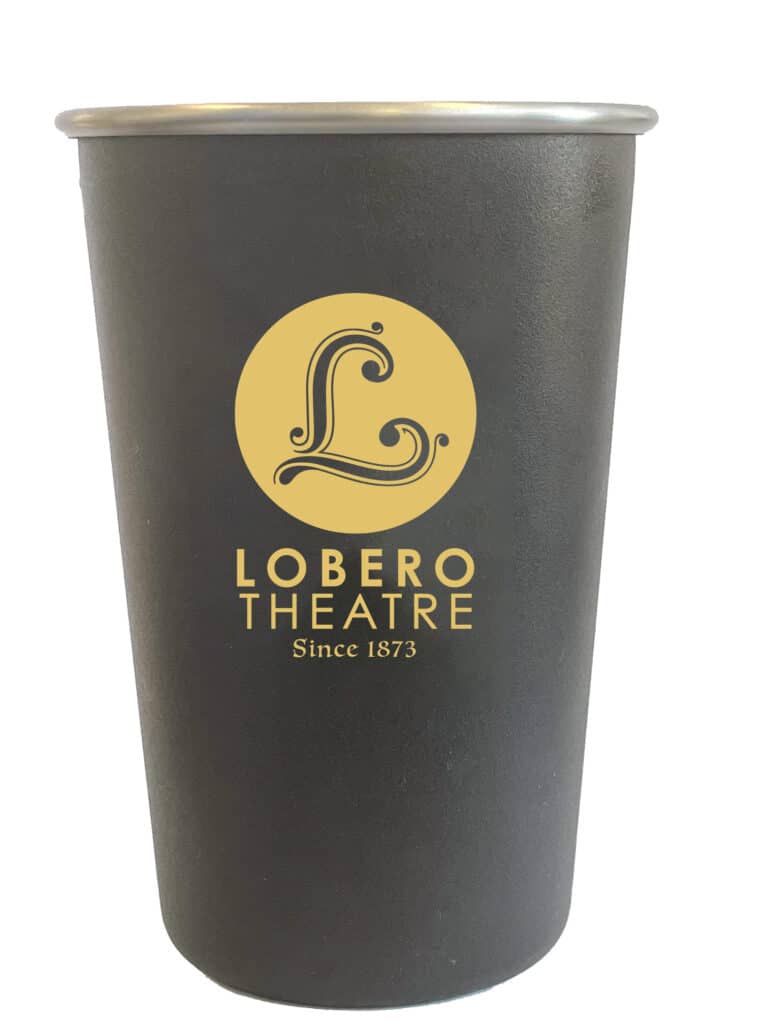In the spring and summer of 1885, Prof. Hinton’s Dancing School booked the theatre three days a week to offer group and private lessons.
The original Lobero Theatre did not have permanent seating, and some of the most popular events in the late nineteenth century were ballroom dances.
Some popular dances of the time included: American Gavotte, Ashland Polka, Bamboula, Buzzard Lope, Cadet Waltz, The Carlton, The Celtic, The Columbia, The Combination Polka, Counjaille, Coquette, Esmerelda Waltz, Eugenie Waltz, Hesitation Waltz (or Valse Boston), Five Step Waltz, Xylophone Polka, Collegiate Polka.
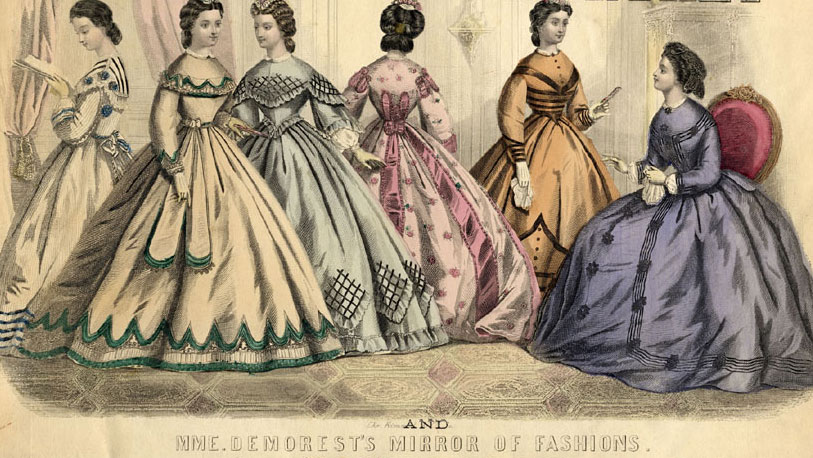
It’s fun to think about the Lobero Theatre emptied of seats and filled with dancers decked out in hoop skirts and tuxedos.
By the 1850’s, waltzing couples were making changes to the original format, much to the chagrin of authors including Allen Dodworth in his manual, 1885 Dancing and its relations to education and social life, who complained about the kicks, slides, and swayings that had become part of waltzing. One of these popular waltzes was known as the Boston Waltz, variations of which can still be seen today.
Another fun fact about these social dances are that both ladies and gentlemen wore gloves, and were expected to carry a second pair in the event that the first became soiled. (Being seen with dirty gloves was a ballroom blunder.) Men might also wear a top hat, while ladies carried parasols, handkerchiefs or a fan.
Sources:
- https://www.loc.gov/collections/dance-instruction-manuals-from-1490-to-1920/articles-and-essays/western-social-dance-an-overview-of-the-collection/nineteenth-century-social-dance/
- https://www.streetswing.com/histmain/d5timlne.htm
- https://www.americanantiquarian.org/Exhibitions/Dance/fashion.htm
